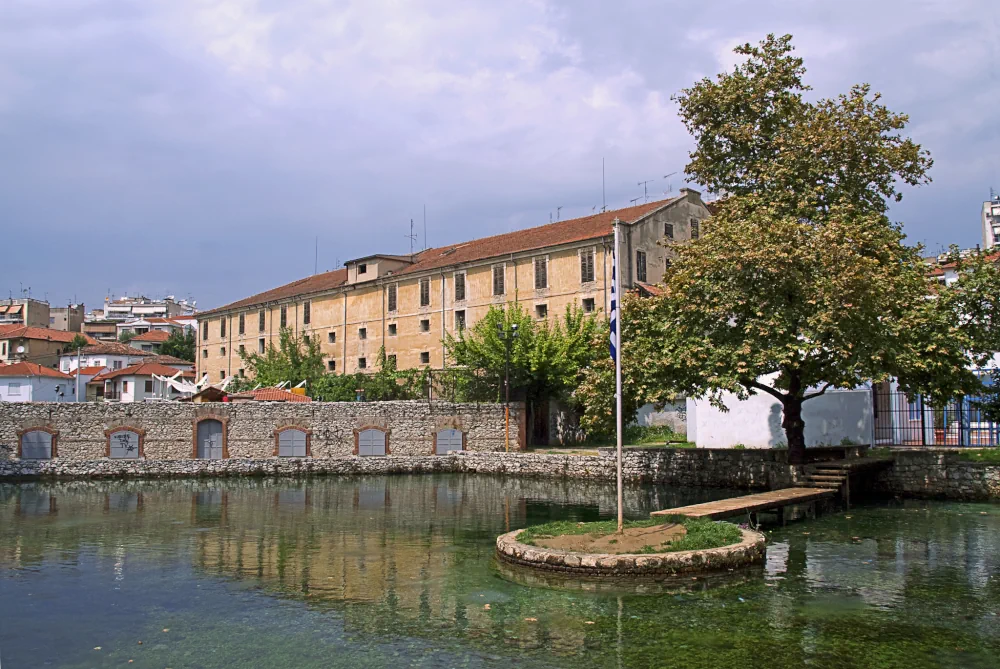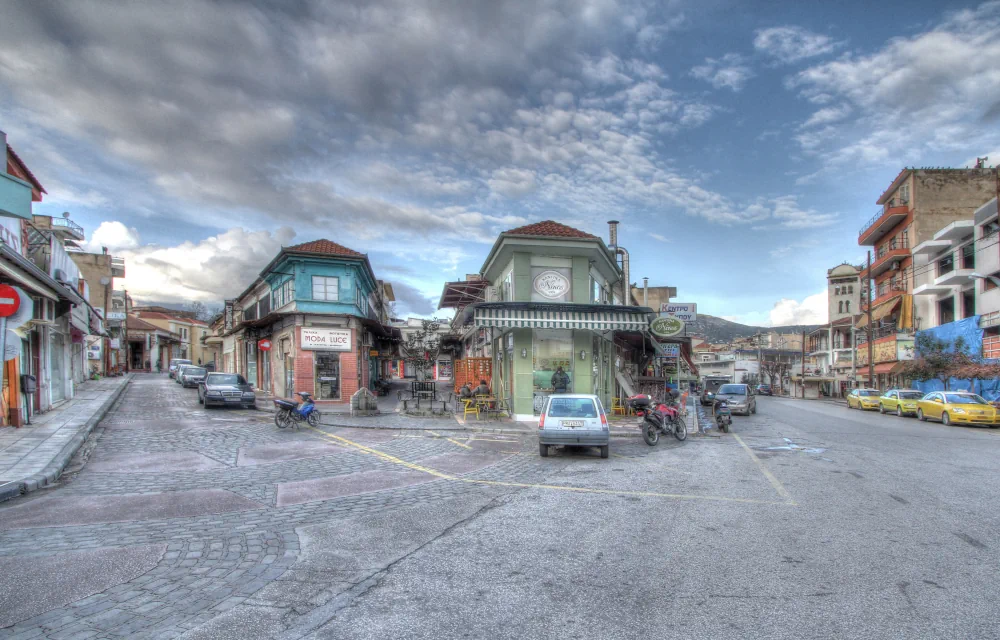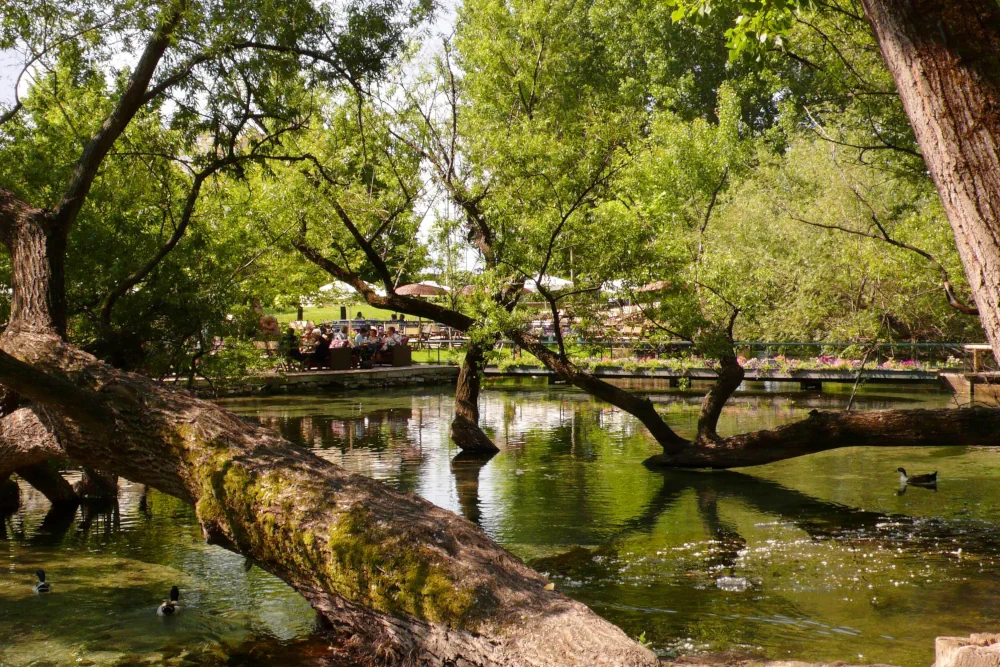Located in Eastern Macedonia and Thrace, Drama is a city with a rich and diverse history that stretches back thousands of years. From ancient settlements and Macedonian rule to its Byzantine, Ottoman, and modern Greek heritage, Drama has played a crucial role in shaping the region’s past. Today, its historical landmarks, archaeological treasures, and cultural traditions make it a fascinating destination for history lovers.

Ancient Drama – From Prehistory to the Macedonian Kingdom
The area of Drama has been inhabited since prehistoric times, with archaeological evidence suggesting that early settlements existed here as far back as the Neolithic period (7000–3000 BC). The region’s fertile lands, abundant water sources, and strategic position made it an attractive place for civilizations to thrive.
During the Classical and Hellenistic periods, Drama was part of the ancient kingdom of Macedonia, ruled by Philip II of Macedon and later his son, Alexander the Great. While Drama itself was not as prominent as nearby cities like Philippi, its surrounding lands contributed to the Macedonian economy, especially through agriculture and trade.
Just 18 km southeast of Drama, the Archaeological Site of Philippi, a UNESCO World Heritage Site, provides deeper insight into this era. Philippi was originally a Thracian settlement, later fortified by Philip II in 356 BC, and became a major center of commerce, politics, and military operations in the region.
Drama in the Roman and Byzantine Periods
Under Roman rule, Drama and its surrounding areas flourished due to the Via Egnatia, a major Roman road connecting the Adriatic Sea to Byzantium (modern-day Istanbul). This road facilitated trade, military movements, and cultural exchanges, making Drama an important hub in Northern Greece.
During the Byzantine Empire (330–1453 AD), Drama became a fortified town, with several churches and defensive structures built to protect it from invasions. The Byzantine Fortress of Drama, located in the city center, is a remnant of this period, showcasing medieval military architecture.
The Hagia Sophia Church, one of Drama’s oldest religious landmarks, dates back to the 10th century and is a stunning example of Byzantine craftsmanship, with original frescoes and intricate mosaics still visible today.

Ottoman Rule and Modern History
In 1383, Drama fell under Ottoman rule, marking a period of significant transformation. The city developed into an administrative and trade center, with new mosques, markets, and Turkish baths built to accommodate its growing population.
Ottoman influence is still visible in Drama’s architectural heritage, particularly in buildings such as the Aristotle Municipal Conservatory, a former Ottoman school, and traditional stone-built mansions found in the Old Town of Drama.
During the late 19th and early 20th centuries, Drama became a center for Greek resistance against Ottoman rule. The city was officially liberated and became part of Greece in 1913, following the Balkan Wars.
However, the region’s struggles didn’t end there. During World War II, Drama was occupied by Bulgarian forces (1941–1944), leading to significant hardship for its population. The Drama Uprising of 1941, a Greek resistance movement against the occupation, remains a crucial part of the city’s modern history.
Historical Landmarks and Museums in Drama
Drama preserves its rich history through a variety of museums and archaeological sites, offering visitors a deep dive into its past.
Archaeological Museum of Drama
This museum features artifacts from prehistoric settlements, ancient Macedonia, and the Roman and Byzantine periods, showcasing the city’s long history. Displays include ceramics, tools, jewelry, and religious relics from different historical eras.
Folklore Museum of Drama
A cultural treasure, this museum highlights traditional Greek life, clothing, furniture, and crafts, giving visitors a glimpse into the region’s folk heritage.
Byzantine Fortress of Drama
The remains of this medieval fortress stand as a reminder of Drama’s strategic military importance during Byzantine times.
Hagia Sophia Church
A stunning Byzantine-era church with preserved frescoes and intricate stonework, reflecting the city’s religious and artistic traditions.
Drama Railway Museum
For those interested in modern history, the Drama Railway Museum showcases the evolution of rail transport in the region, displaying historic train carriages and railway artifacts.
Archaeological Site of Philippi (18 km from Drama)
A UNESCO World Heritage Site, Philippi is one of the most important ancient sites in Greece, featuring a Roman theater, early Christian basilicas, the Forum, and the Octagon Church.

Drama Today – A City That Honors Its History
While Drama has embraced modern life, it remains deeply connected to its past. The city’s annual festivals, cultural events, and historical sites make it a place where history and tradition coexist with contemporary Greek culture.
The Drama International Short Film Festival, held every September, attracts filmmakers from around the world, while traditional Greek festivals celebrate the city’s customs and heritage.
For visitors, Drama is not just a stop on the map—it’s a gateway to Northern Greece’s rich history, natural beauty, and cultural depth. Whether exploring ancient ruins, walking through Byzantine streets, or experiencing authentic Greek traditions, Drama offers a journey through time like no other.
The Name “Drama” – Origins and Meaning
The name Drama has fascinated historians and linguists for centuries. While its exact origins remain uncertain, there are several theories about how the city got its name, each reflecting a different aspect of its rich history.
Regardless of its exact origins, the name Drama is closely tied to the region’s natural beauty, ancient history, and cultural legacy. Whether derived from Hydrama’s flowing waters, Thracian heritage, or linguistic evolution, the city’s name carries the weight of centuries of human civilization. Today, Drama stands as a vibrant city that blends history, nature, and culture, remaining true to its ancient name and origins.
1. Ancient Greek Origins – Hydrama (Ύδραμα)
One of the most widely accepted theories is that Drama comes from the ancient Greek word “Hydrama” (Ύδραμα), which refers to water sources or flowing water. This makes sense given the city’s abundant natural springs, which have supported human settlement in the area since prehistoric times. Drama is known for its lush greenery, fertile land, and numerous water sources, particularly in the Agia Varvara Springs, located in the heart of the city.
2. Thracian and Macedonian Influences
Another possibility is that the name Drama has Thracian origins. Before becoming part of the ancient Macedonian kingdom, this area was inhabited by Thracian tribes, who may have given the settlement an earlier name, which evolved over time. Some historians suggest that the Thracian language influenced the formation of place names in the region, blending with Greek linguistic traditions.
3. Byzantine and Ottoman Evolution
During the Byzantine period, the city was a small but important settlement, and its name was gradually simplified from Hydrama to Drama. Under Ottoman rule, the name remained relatively unchanged, with historical records referring to it as “Drama” in Turkish as well.
4. Mythological and Poetic Interpretations
While less historically supported, some scholars have drawn connections between the name Drama and the Greek word “δράμα” (drama), meaning theatrical play or dramatic event. Though there is no direct link between the city’s name and ancient Greek theater, the Drama International Short Film Festival today plays on this linguistic connection, making Drama a modern cultural hub for storytelling and cinema.

